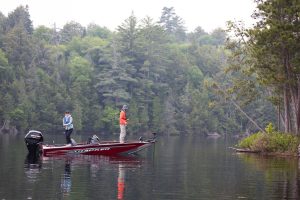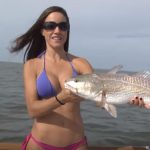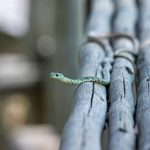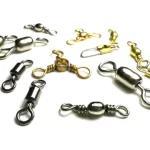Striper fishing success relies on understanding fish behavior, using the right gear and bait, and applying proper timing and technique. Whether fishing from the shoreline or testing out a new bass boat, the goal is to enjoy the experience and catch some great fish. Here are some essential tips to maximize success this season.
Understanding Striper Behavior
Learning about striper habits and preferred habitats makes a big difference when planning a fishing trip.
Seasonal Movement
Striped bass migrate based on the seasons. Typically, they travel south in the fall and return north in the spring, often along the Atlantic Coast. While stripers can be found year-round, targeting areas along their migration routes will increase the likelihood of a productive day.
Preferred Habitats
Stripers are often found near rocky shorelines, estuaries, and deep waters. Low-light conditions, such as early mornings and evenings, offer the best opportunities. During cloudy days and before or after storms, stripers may feed for longer periods. In the summer, nighttime fishing is most effective, while winter fishing requires patience as stripers tend to feed less in colder temperatures.
Feeding Habits
Striped bass are opportunistic predators. Baitfish like bay anchovies, sand eels, and menhaden are commonly targeted, but stripers also eat clams, shrimp, and squid. Understanding local baitfish populations will provide valuable insight into what stripers are feeding on.

Choosing the Right Gear
A sturdy setup is essential for handling the size and strength of striped bass.
-
Rods and Reels: Medium-heavy rods and strong reels with reliable drag systems are recommended.
-
Line and Leaders: Braided line provides strength and sensitivity. Pairing it with fluorocarbon leaders offers better stealth in clear waters.
-
Hooks and Lures: Quality hooks, soft plastics, and topwater lures work well. Adjust lure selection based on water clarity and fish activity.
Selecting the Best Bait
Bait selection can make or break a fishing trip. Both live bait, cut bait, and artificial lures are effective, depending on the conditions.
-
Live Bait: Eels, bunker, and shad are popular live options.
-
Cut Bait: Mackerel or squid chunks attract stripers with their strong scent.
-
Artificial Lures: Swimbaits, jerk baits, and spoons are versatile for covering larger areas.
Effective Striper Fishing Techniques
Mastering a variety of fishing methods increases the chances of success. Some commonly used techniques include:
-
Trolling: Cover large areas using umbrella rigs or weighted lines to locate schools of fish.
-
Casting: Target visible schools of feeding stripers for a more active fishing experience.
-
Drifting: Letting the natural current carry live bait or cut bait is a relaxed but effective method.
The choice of technique depends on fishing conditions, comfort level, and available equipment.
Timing Is Everything
Stripers are most active during the early morning and late evening. Fishing during incoming tides and around the full moon can also improve results. Paying attention to the tide charts before heading out can make a significant difference.
Choosing the Right Location
Stripers often gather in coastal waters, river mouths, and offshore reefs. Using fish finders and GPS systems can help locate schools more efficiently. Even with the best bait and gear, fishing in the wrong spot reduces the chances of success.
Adapting to Water Conditions
Weather and water clarity should guide bait and lure selection. On overcast days, stripers tend to feed longer, while windy conditions can increase activity near the surface. In murky water, brightly colored lures or those with extra vibration are often most effective.
Conservation and Legal Compliance
Following local regulations is essential. Be aware of size and bag limits and practice responsible catch-and-release when necessary. Handle fish with care and return any undersized or excess catches to the water quickly to reduce harm.
Boaters should also check for any education requirements before heading out. Completing a boater education course can ensure safety and legal compliance on the water.
Be Prepared for a Safe Trip
Proper planning goes beyond just fishing gear. Carry life jackets, first aid kits, and other essentials. Adjust gear and tactics based on changing conditions to stay safe and enjoy the day.
Bonus Tips for Experienced Anglers
For those seeking a greater challenge, chumming with baitfish can draw stripers closer. Night fishing in high-pressure areas also provides the opportunity for larger catches. Once comfortable with basic striper fishing, experimenting with these advanced techniques can add excitement to the experience.
Enjoy a Successful Striper Fishing Season
These tips will help anglers increase their chances of catching striped bass this season. Before heading out, ensure compliance with all boating and fishing regulations. Boater education courses offer valuable knowledge for safer and more enjoyable trips.
With the right preparation and understanding, this season can be full of unforgettable striper fishing moments.
Image/Source: boaterexam





